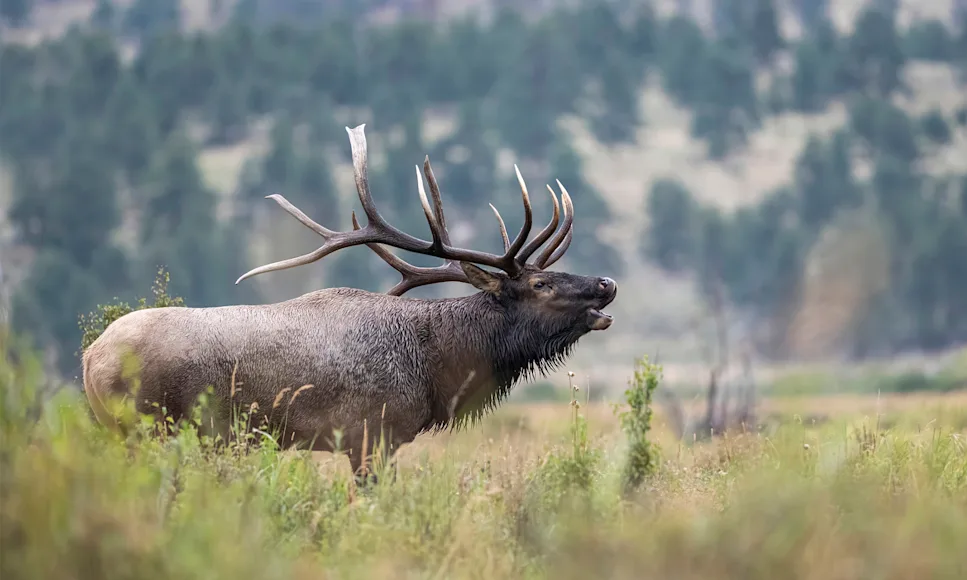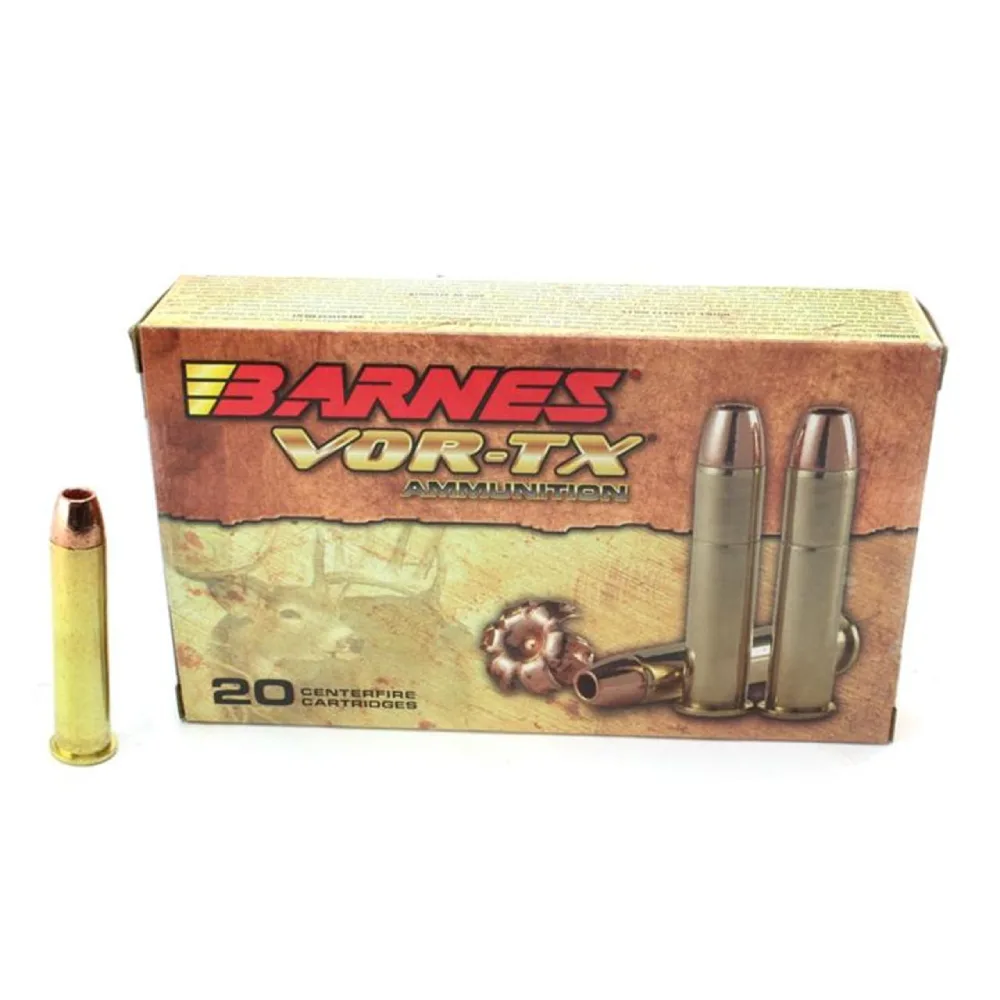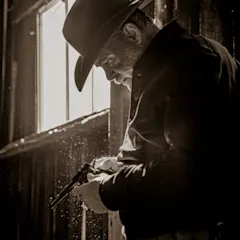We may earn revenue from the products available on this page and participate in affiliate programs. Learn more ›
Elk are big. Elk are tough as hell. And elk live in the great wide open of the West. Those three things alone should give you a pretty good idea of what you need in a good elk cartridge. It should be flat shooting, pack a punch downrange, and deliver a bullet that upsets reliably and penetrates deeply. But none of that matters if you can’t shoot it straight.
What separates adequate elk cartridges from the best elk cartridges is that the latter get the job done without rattling your brain so hard that you can’t keep their bullets on target. So, with a few exceptions, my picks for the top elk stoppers have three things in common:
They have muzzle energies of more than 2400 foot-pounds.
The can all push bullets past 500 yards while still delivering reliable bullet upset.
They have manageable recoil.
For variety’s sake, and because not all elk live in the open, I’ve picked the best dozen options between .25- and .45-caliber. The final thing all these cartridges have in common is that except for the one newcomer, they’re as common as Covid—with easy-to-find ammo and lots of options to choose from. And for all but the two, newest elk killers on this list, hunters have been trusting these cartridges for a long, long, time.
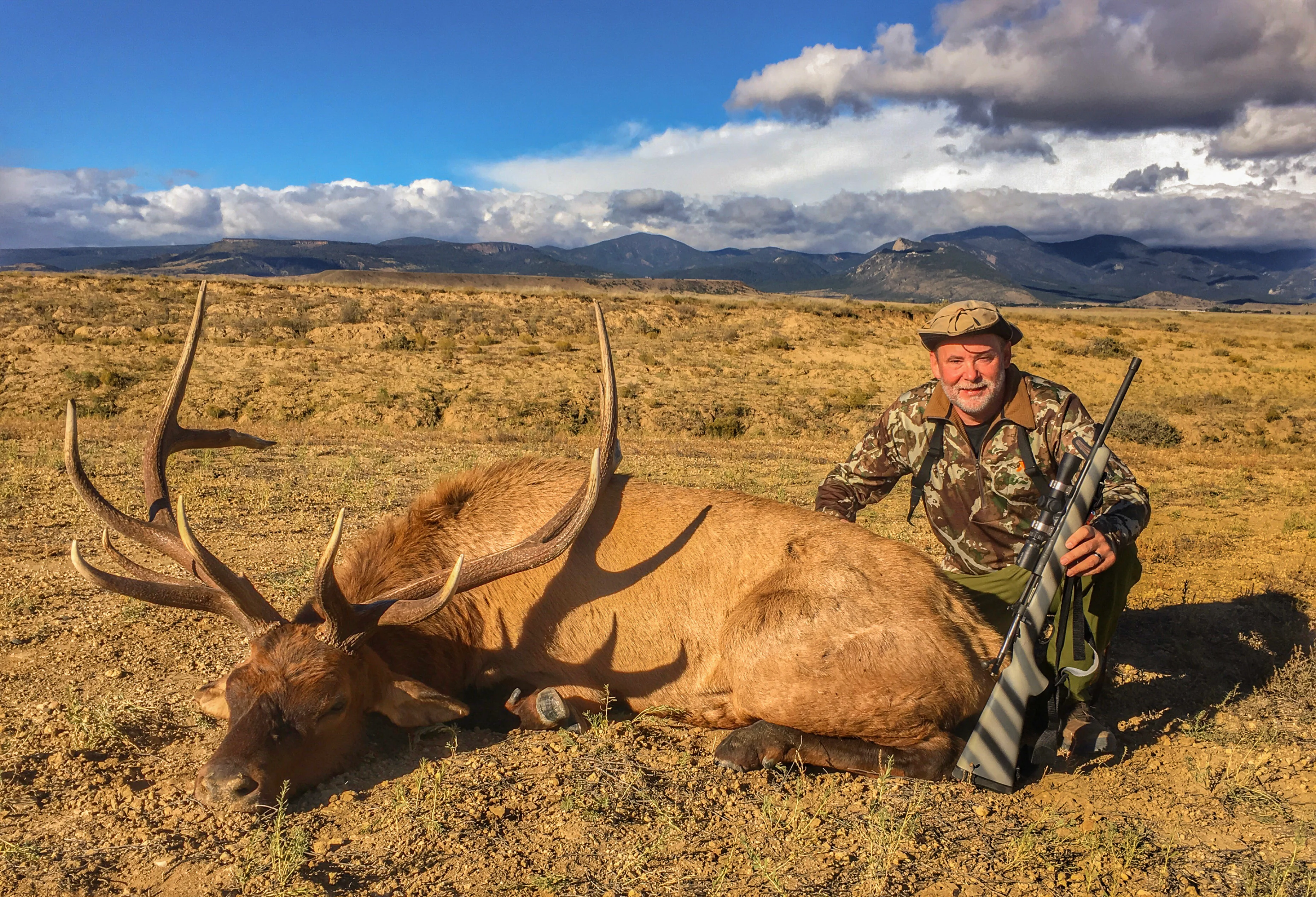
Best Overall: 300 Winchester Magnum
Best Long Range: 7mm PRC
Best Light Recoiling: 25-06 Remington
Best Timber: 45-70 Government
Best Classic: 35 Whelen
Best Newcomer: 7mm Backcountry
Rest of the Best
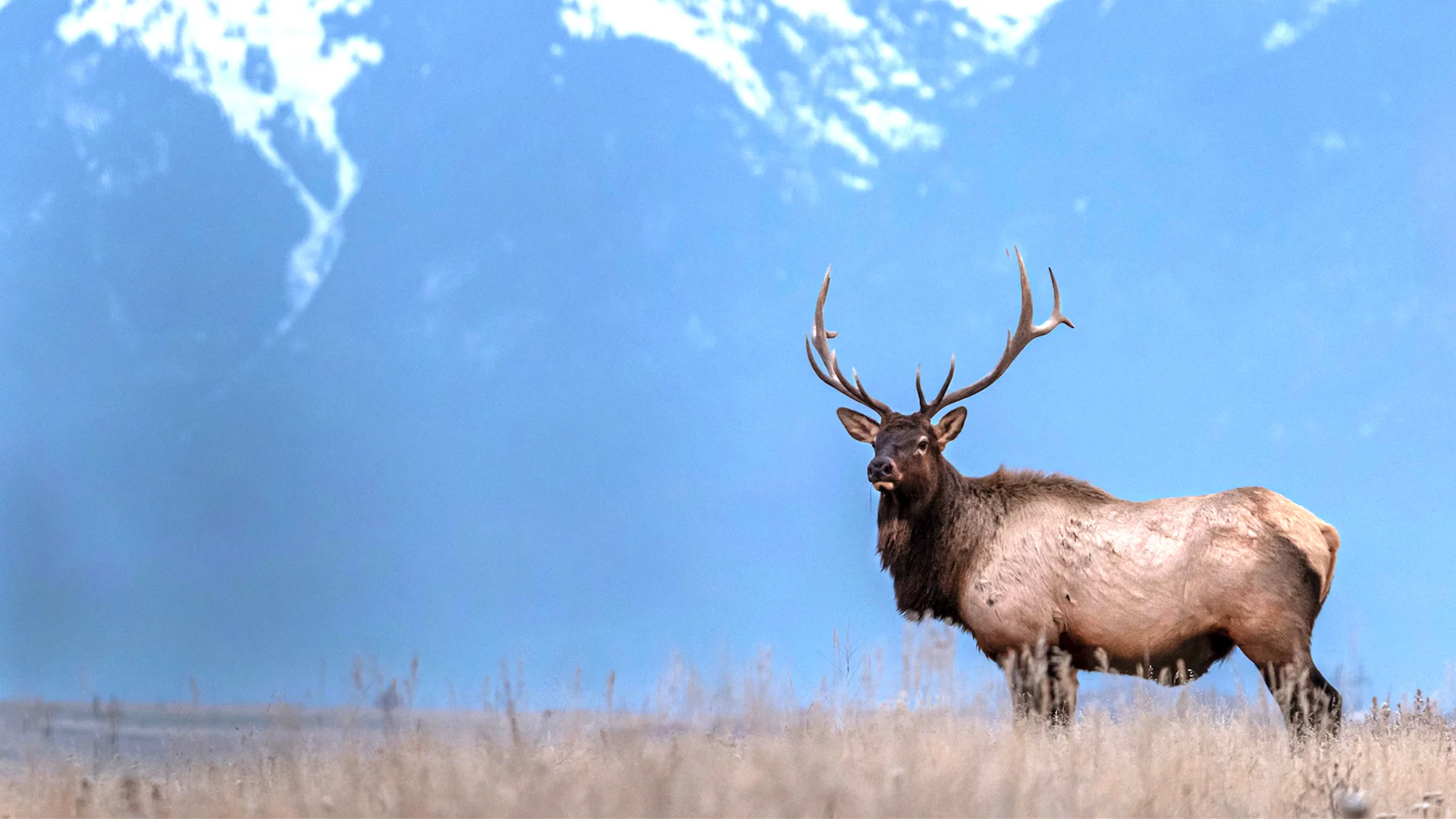
Related: Best Elk Rifles for Elk in the Timber
Best Overall: 300 Winchester Magnum
Lots of serious hunters still argue that you need a big bullet for big elk. Meanwhile, virtually every elk hunter these days wants a flat-shooting cartridge loaded with a high-BC, heavy-for-caliber bullet. That's the hot trend. The irony is that Winchester gave us a cartridges that delivers on all counts way back in 1963, when they introduced the 300 Winchester Magnum.
A 180-grain, 0.52-BC, Swift Scirocco bullet fired from a 300 Win Mag has more than 3300 foot-pounds of energy at the muzzle and hits at 500 yards like a 30-06 does at 300. At 30 grains heavier, it still travels as fast as a 150-grain 30-06. Of course, there's a tradeoff. (There always is.) The 300 Winchester Magnum shoots flatter and harder than the 30-06, but it recoils with about 40% more force—but it's not the beast some people make it out to be.
The 300 Win Mag gets my nod for the best overall elk cartridge for three reasons. First, it has proven itself in North America and all over the world, and on game much larger than elk. Second, it works near and far, in the timber or the open. Third, for anyone who can handle some recoil, it strikes a perfect balance.
This list of best elk cartridges includes options with maximum effective ranges from around 200 yards (45-70) to as much as a 1,000 yards (7mm PRC). Similarly, their recoil ranges from as light as 15 foot-pounds (25-06) to as much as 45 foot-pounds (338 Win Mag). If we split that all right down the middle, we get a cartridge that would reach out to around 600 yards and recoil with about 30 foot-pounds of force. That perfectly describes the 300 Winchester Magnum, and given the number of rifles and loads available for this cartridge, I think it is the best all-around for elk.
Best Long Range: 7mm PRC
The 7mm PRC won't kill elk any deader than the 7mm Remington Magnum, which you’ll find farther down this list. But it's here as my pick for one of the best long-range elk cartridges because for those who want to shoot elk at ridiculous distances, there is only one—a brand new cartridge that's less proven—that’s ballistically better. The 7mm PRC is one of the best long-range hunting cartridges ever created. This is due to the high BC bullets it can stabilize with its fast twist rate, combined with the velocity with which it launches them.
On the downside, there are not a lot of factory loads for it, but if you want to shoot your elk in the next zip code, short of field artillery or the abominable 338 Lapua Magnum, the 7mm PRC is clearly one of the best options. It retains velocity so well, bullets will still upset/expand as far away as 1,000 yards (not that I recommend shooting elk at a 1,000 yards.)
Best Light Recoiling: 25-06 Remington
Young hunters, new hunters, and some older hunters can be very sensitive to recoil. I have a friend with a big screw in his right shoulder, and to avoid serious pain, he must keep recoil under about 15 foot-pounds. Muzzle brakes can reduce recoil, but they’re obnoxiously loud. Suppressors can help too, but they add length and weight to a rifle that might complicate their use for young shooters and others with limited upper body strength. What these shooters need is a light-recoiling cartridge that will get the job done on elk.
The 243 Winchester and 6.5 Creedmoor are light-recoiling and flat-shooting, but at practical shooting distances, they cannot compete with a 25-06, which can push a 100-grain Nosler Partition bullet at about 3300 fps. This load has more than 2400 foot-pounds of energy at the muzzle and when zeroed at 200 yards, the bullet drops less than 6 inches at 300 yards. Introduced in 1969, the 25-06 Remington has been the most successful 0.25-caliber cartridge to date. The faster-shooting 257 Weatherby has merit, but its sizzling velocity can over-stress all but the toughest bullets when the range is close, and it recoils like a 30-06. If you’re recoil sensitive, the 25-06 is a great choice for elk.
Best Timber: 45-70 Government
If you're an old-school elk hunter who'd rather slip through the dark timber than scan the far ridge, then you're probably someone who also loves lever guns. Although the AR rifle has become the most popular rifle in America, the true American rifle is the lever-action. It’s quick-handling characteristics and fast repetitive fire also makes it handy for elk in the timber. While there are lever-action rifles, like the Browning BLR, that work with more modern cartridges, the traditional lever gun is the tube-fed version, and in that configuration, there’s only one serious elk cartridge: the 45-70 Government. As a friend says, “It’s the only ‘government’ I trust.”
With a 300-grain Barnes Triple Shock at 1900 fps, the 45-70 will generate 2400 foot-pounds of energy at the muzzle and will poke a hole nearly an inch in diameter through a bull elk. In no real or imagined reality is the 45-70 a 500-yard elk cartridge, but if that’s what you want, there are plenty of others on this list to choose from. On the other, if what you want is to slip close to elk in the hidden places where they bed and linger, then you can't go wrong with a lever gun in 45-70.
Related: 9 Expert Elk Hunting Tips for Public Land Hunters
Best Classic: 35 Whelen
Speaking of exceptions in terms of recoil: In 1922 James Howe necked up the 30-06 case to accept a 0.358-cailber bullet and named the cartridge the 35 Whelen, after U.S. Army Colonel and noted backcountry hunter and gun writer, Townsend Whelen. It was such a hit that Remington legitimized the cartridge in 1988. Despite its stout recoil, the Whelen gets a spot on my list because it's such a cult-classic elk cartridge, and because I know of nothing that can stand up to the Whelen. A good friend used the one I sold him to stop a charging grizzly on Kodiak Island.
Inside 300 yards, anything you can do with a 338 Winchester Mangum you can also do with a 35 Whelen, and the best elk hunters I know don’t shoot past 300 yards anyway. Loaded with Buffalo bore’s 225-grain Barnes Triple Shock at 2800 fps, it has nearly 4000 foot-pounds of muzzle energy, will only drop about 8 inches at 300 yards. It will also knock all the attitude and life out of the biggest, sex-crazed, mud-covered bull elk on the planet. You’ll know it when you pull the trigger too; this ain't no 30-06.
Best Newcomer: 7mm Backcountry
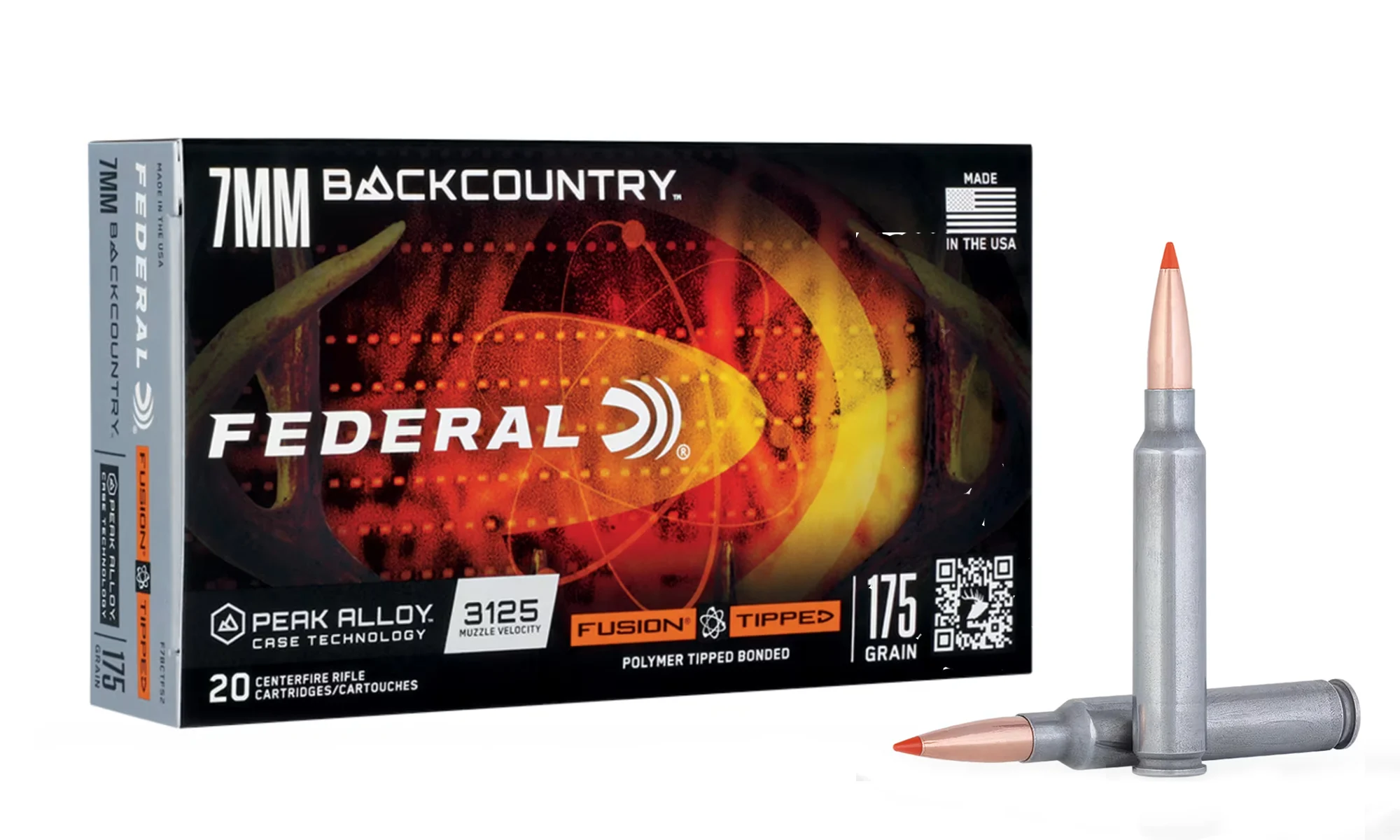
As good as the 7mm PRC is for long-range hunting, the 7mm Backcountry is better. It’s better because it shoots faster and flatter, and it does so out of a shorter barrel. This makes your rifle lighter, easier to carry and maneuver in tight confines, and most important, it makes your rifle more compatible with a suppressor. If you compare a 7mm PRC and a 7mm Backcountry—both with a 20-inch barrel, and both shooting the same weight bullet—the 7mm Backcountry will have a 200 fps advantage. The 7mm Backcountry cartridge case is also smaller in diameter, which means in most rifles you have at least a one round advantage in the magazine box.
How is all this possible? Well, when Federal created the 7mm Backcountry they used steel-alloy case technology that they had been developing for the military. These new cases can handle much more pressure, and the 7mm Backcountry is loaded to 80,000 psi as opposed to 65,000 psi like the 7mm PRC. It looks like Federal will be the only company loading ammo for the 7mm Backcountry, but they currently offer five elk-capable loads. I’ve not shot an elk with the 7mm Backcountry, but I have used it on kudu in Africa with Federal’s 175-grain Tipped Fusion load. One shot, one dead kudu bull.
Rest of the Best
30-06 Springfield
Often heralded as the winner of two World Wars, some consider the 30-06 Springfield as the best big-game cartridge of all time. It has been with us for almost 120 years, and with modern powders and bullets, it's more effective today than ever. Out of an 8-pound rifle, a 30-06 will punch you with about 24 foot-pounds of energy, an amount most experienced shooters can handle without ill effects. Factories generally load 30-06 ammo with bullets ranging between 150- to 180-grains, and one of the best for elk is the 165-grain bonded Federal Fusion. It will generate more than 2800 foot-pounds of energy at the muzzle and zeroed at 200 yards it will only drop about 8 inches at 300. An elk that can withstand a hit from this combination in his boiler room has never existed. If magnum recoil is more than you care for, and if you don't need to shoot elk out to the horizon, the 30-06 is still a great choice.
270 Winchester
Some believe the best thing to come from the 30-06 Springfield is the 270 Winchester, and I agree. Winchester gave hunters this cartridge 100 years ago, and it remains the most popular 0.277-caliber cartridge of all time. The 270 Winchester will generally give its best performance with a 130-grain bullet, and if it’s a high-BC 130-grain bullet, like the Swift Scirocco, it will shoot faster and flatter than the 30-06 and nearly match its energy out as far as you have any business shooting at an elk. With an 8-pound rifle, you’ll feel about 10% less recoil than with the 30-06, and at 300 yards the bullet will drop about 25% less. The great gun writer Jack O’Conner swore by the 270 Winchester and had a hand in making it one of the most popular cartridges for big-game hunting. He wasn't wrong when he first started touting it, and he's even less wrong today—because with modern bullets the 270 is better than ever, and arguably for most hunters, the best big-game cartridge available.
308 Winchester
In 1952 Winchester figured out how to duplicate the original ballistics of the 30-06 in a short-action cartridge and they called it the 308 Winchester. The U.S. military took note and retired the 30-06 in favor of Winchester’s new short-action 0.30-caliber cartridge. Modern 308 Winchester loads lag about 80 to 100 fps behind modern 30-06 Springfield loads with the same bullet weight, but they also push on your shoulder about 20% less. In addition to less recoil and only minimal differences in trajectory, there are a lot more factory loaded, elk-capable, 308 Winchester ammo options to choose from. I took nice elk in Montana and New Mexico with the 308 Winchester. I shot both at more than 300 yards, and neither took a step after the hit. Something like Federal’s 150-grain Trophy Copper Tipped load is all you need for elk if you’re using a 308 Winchester.
6.5 PRC
Not too long ago, a hunter shot an elk with a 6.5 Creedmoor, and it instantly became the best elk cartridge of all time. Well, don't believe it. The Creed will work on an elk, but it’s not the best elk cartridge—it’s not even the best 6.5mm elk cartridge. Hornady introduced the 6.5 PRC about a decade after the Creedmoor, and it shoots flatter and hits harder, and the recoil from an 8-pound rifle is still less than 18 foot-pounds. The 6.5 PRC does not have “magnum” in its name, but it should, as it nearly duplicates the performance of the great but almost forgotten 264 Winchester Magnum. Essentially, it's a 6.5 Creedmoor magnum. Matched with a good bullet, like Nosler’s great 140-grain AccuBond, the 6.5 PRC will only drop about 7 inches at 300 yards, but the high BC bullets it’s capable of handling with its fast twist rate allows it to hit harder and shoot flatter than a 30-06 at distance. You could easily make the argument that the 6.5 PRC offers a better balance of reach and recoil than most other cartridges. And there's a lot to be said for that in elk country.
7mm Remington Magnum
Since 1962 the 7mm Remington Magnum has been one of the most popular big-game cartridges. It was an immediate success because it shot flatter and hit harder than a 30-06 with about the same level of recoil. Until just a couple years ago, its only real competitor of the same caliber was the 7mm Weatherby Magnum, but most people didn’t care; they just kept buying and killing elk with Remington’s big seven. Some hunters prefer heavy-for-caliber 7mm bullets in this cartridge, but a 150-grain Tipped Triple Shock bullet will wreck the insides of a bull elk out to 500 yards and most times it will produce an exit wound in the process. What about the 28 Nosler? Yeah, it’s faster, but with that little bit extra speed comes about 22% more recoil, and good luck finding ammo for it at a hardware store in Dillon, Montana.
338 Winchester Magnum
Long time F&S rifles editor Dave Petzal trusts the 338 Winchester Magnum, which has been with us since 1958, more than any other and has said, “I’ve never seen anything that could stand up to it, either here or in Africa.” That's good enough for me, and why this is my third, and last, exception in terms of recoil.
The 338 Win Mag is indeed a beast that generates nearly 4000 foot-pounds of energy at the muzzle while shooting as flat as a 30-06 Springfield. That said, it also kicks twice as hard as the 30-06. But here's the thing, if you use the right bullet in a 338 Winchester Magnum, like say a 225-grain Hornady CX, you’ll shoot through any bull elk you encounter and no matter how rut-crazed he might be, you’ll put his nose in the dirt. If you are one of the many elk hunters for whom enough gun is never really enough, then take a close at the 338. If you can handle it, go for it. You’ll never have an elk guide say you showed up under-gunned.
Related: The Best Rifles of 2025, Tested and Reviewed
What Makes a Good Elk Bullet?
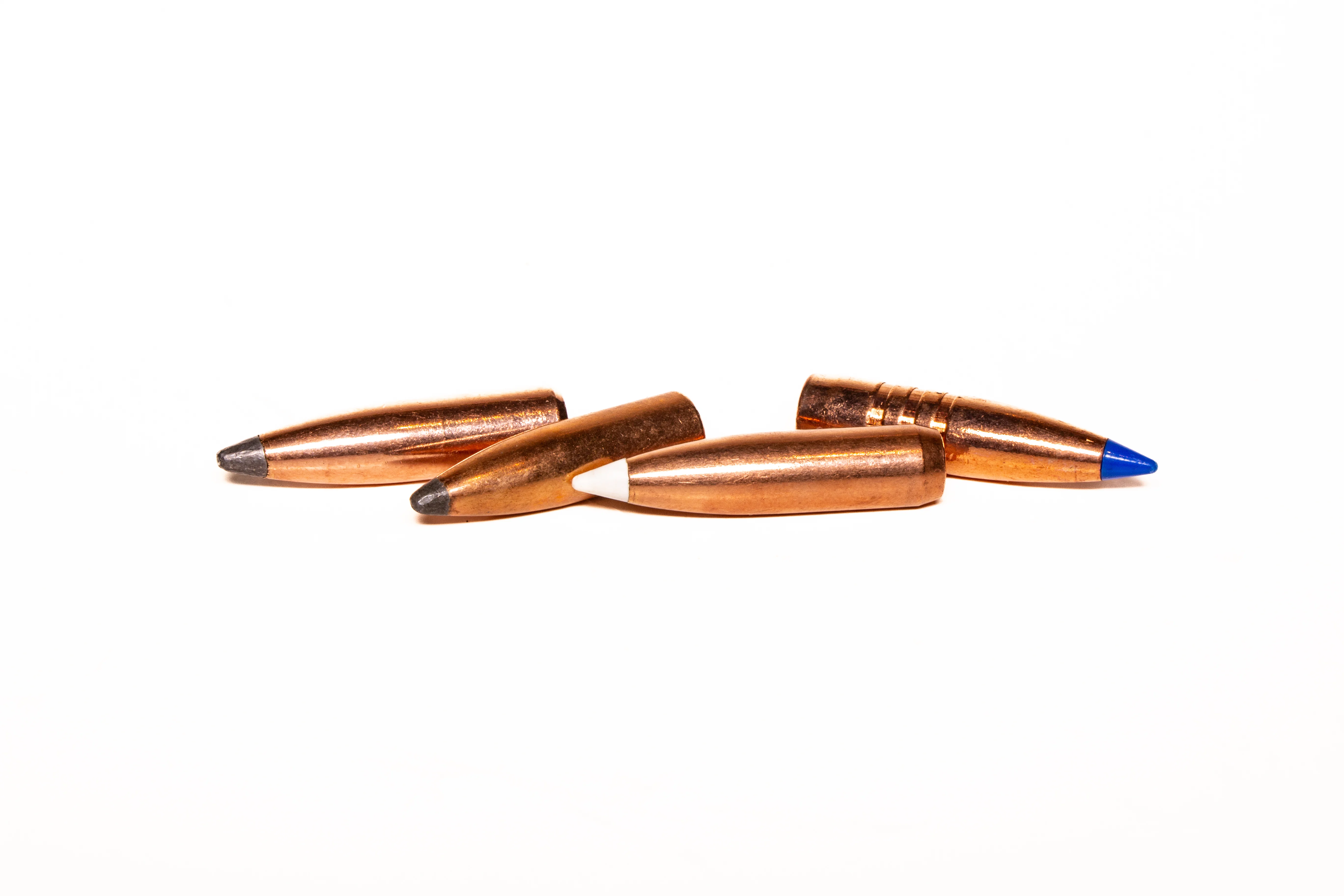
Too often elk hunters put too much emphasis on the cartridge they use, and not enough of the bullet it is loaded with. The cartridge is the launch pad, but the bullet is what does the killing. This means a bad bullet choice can make a solid elk capable cartridge perform poorly, and a good bullet choice can make a cartridge generally considered not powerful enough for elk work just fine. There are essentially three types of big game bullets to choose from, and you’ll be better off if you select the right bullet for your favorite elk cartridge.
Conventional cup and core bullets like the Remington Core-Lokt and Winchester Power Point will work on elk, but they will work best with an impact velocity of between about 1600 and 2800 fps. When fired from high velocity cartridges into an elk at close range they can become overstressed and fail to deliver the terminal performance you desire. Bonded and partitioned bullets can withstand high impact velocities but on the low end they perform best when impacting at 1800 fps or faster. They also tend to penetrate deeper than conventional cup and core bullets. And finally, we have the mono-metal, lead-free bullets. For the best results they need to impact at 2000 fps for faster. Mono-metal bullets cannot deliver the wide and voluminous wound cavities that lead core—conventional or bonded—bullets can, but in most cases they will penetrate deeper.
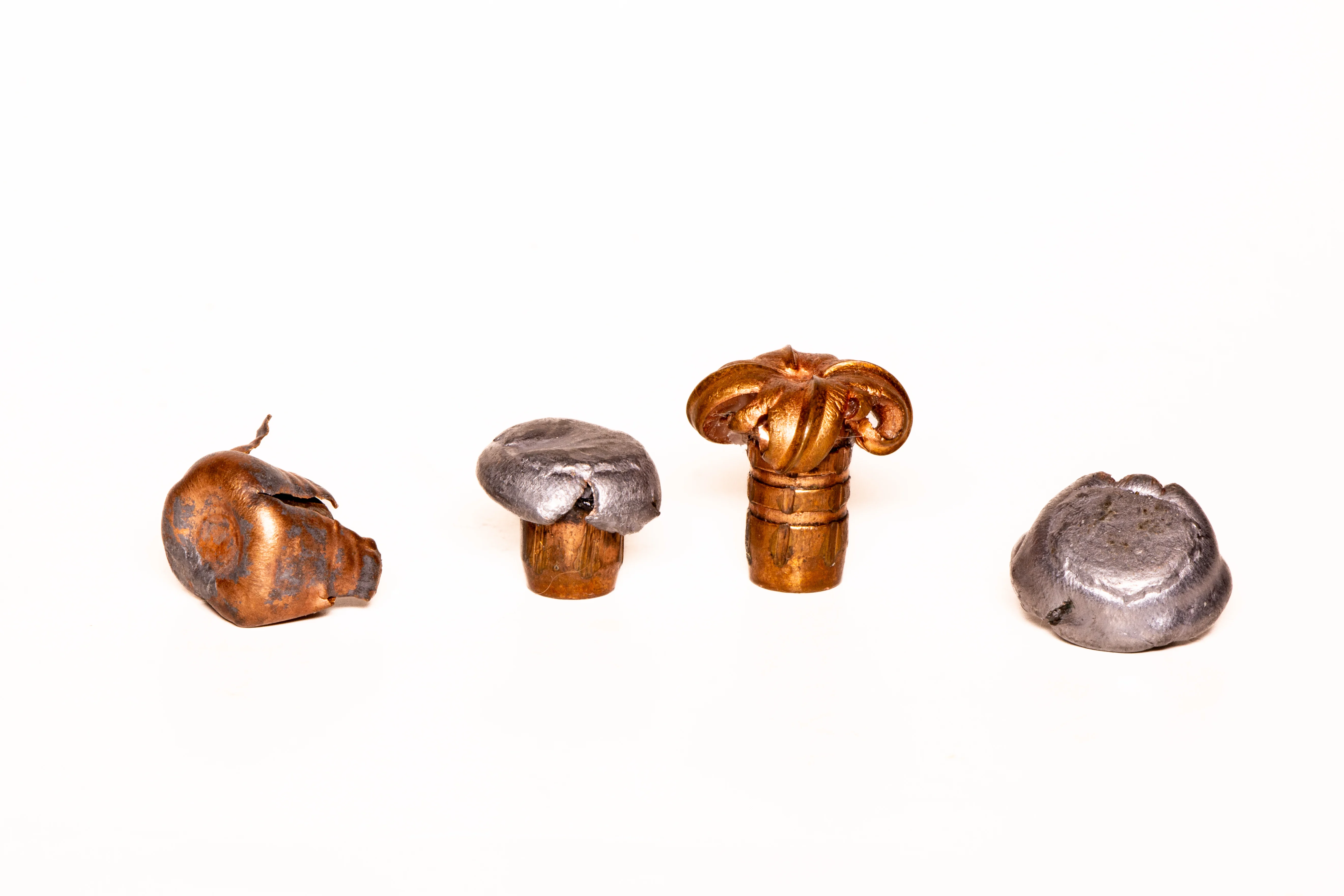
The partitioned, bonded, and mono-metal bullets cost a bit more, but they are a small price to pay for some added insurance that you’ll get the terminal performance you need on an elk. And with cartridges that have a muzzle velocity faster then 3000 fps they should be considered mandatory. It’s one thing to miss an elk—sometimes we all make bad shots—but’s it’s another thing entirely—even negligent—to shoot and elk with a bullet that’s not up to the job. Choose wisely.
How To Choose the Right Elk Cartridge for You

So, that's a dozen great elk cartridges. But which one is right for you? The first and most important consideration is whether you can shoot the cartridge accurately. Over the years F&S rifle editor Dave Petzal has penned a lot of wise words about hunting, but maybe his wisest are,“If you can’t shoot, it doesn’t matter what you use. If you can shoot, it doesn’t matter what you use.”
It’s damned hard to shoot a rifle accurately when you’re anticipating a hard punch, so excessive recoil is a bad thing, and the tolerance for it varies greatly from shooter to shooter. Shot placement matters most, but as hunters we also want to send a bullet that will deliver maximum damage for a quick kill.
You maximize damage by using a bullet that will upset but not disintegrate, and that will penetrate deep enough. How deep is deep enough? That depends on the angle of the shot, but as a minimum, we want a bullet that will perforate the vitals from most any practical shot angle. For years hunters thought this was only achievable with heavy bullets. However, today’s modern projectiles have changed all that; bonded and mono-metal bullets can push to incredible depths, even after upset. And, as the great African professional hunter Finn Aagaard wrote, “Given sufficient penetration, what does any additional bullet weight add to killing power? Nothing, absolutely nothing.” All the cartridges above will do enough damage to kill an elk with a properly placed shot. You want to pick the one that hits the hardest, but that you also know you can handle and shoot well.
Final Thoughts
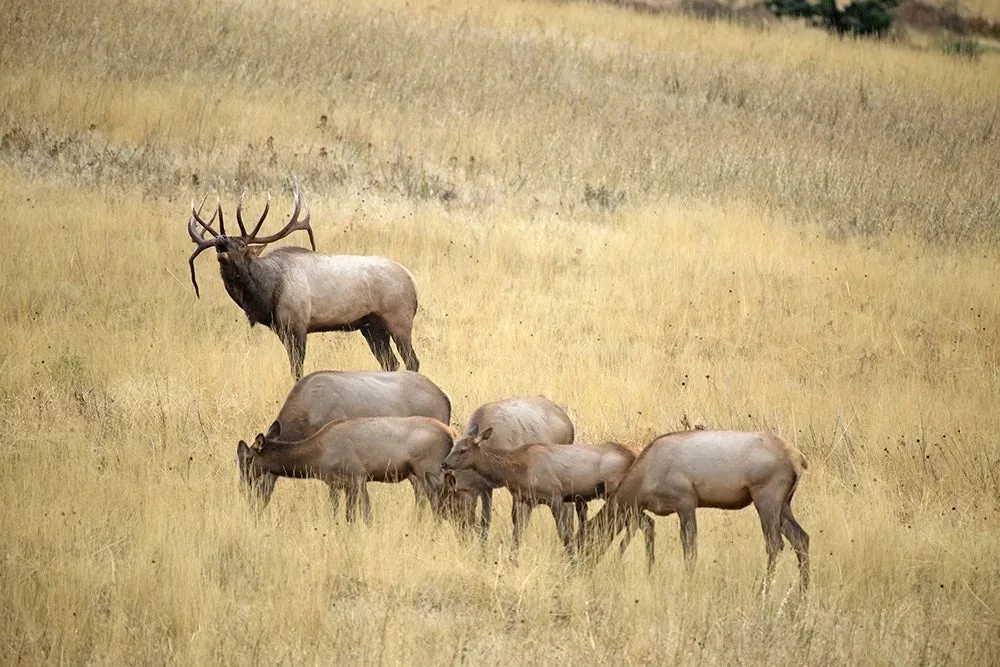
Of course, you don’t have to select one of these dozen cartridges for hunting elk. There are a lot of others I’ve left off this list that will work very well too. There’s all the Weatherby magnums, and a bunch of 7mms, like the 7mm-08, 7x57 Mauser, 280 Remington, 280 Ackley Improved, and the almost forgotten 284 Winchester. There are also a lot of other 0.30-caliber cartridges that’ll do the deed, as well, like the ancient 300 Savage, the 300 Winchester Short Magnum, and when the distance is close, even the 30-30 Winchester.
But this list is a list of the best of the lot, and the cartridges on it have proven themselves. Except for the newest two, they’re also popular enough you can generally find a good selection of rifles and ammunition to choose from. If you do choose one of these, and if you do your job as a hunter, you can’t go wrong with any of them.
Why Trust Us
For more than 125 years, Field & Stream has been providing readers with honest and authentic coverage of outdoor gear. Our writers and editors eat, sleep, and breathe the outdoors, and that passion comes through in our product reviews. You can count on F&S to keep you up to date on the best new gear. And when we write about a product—whether it’s a bass lure or a backpack—we cover the good and the bad, so you know exactly what to expect before you decide to make a purchase.

